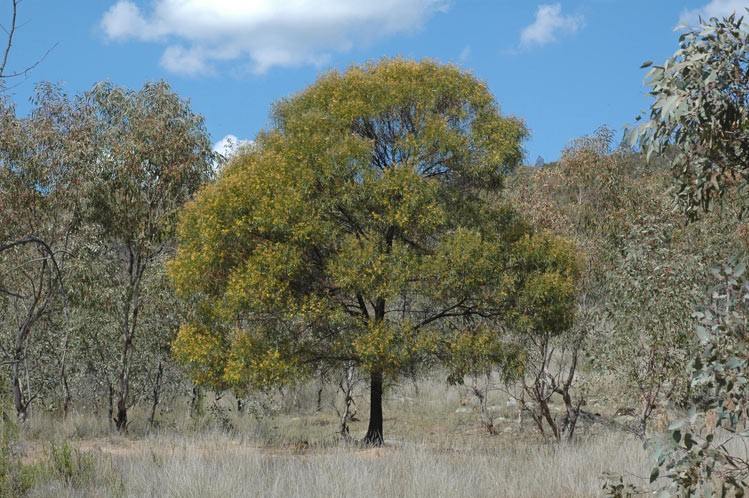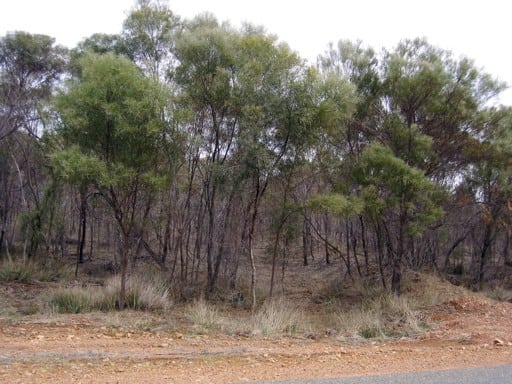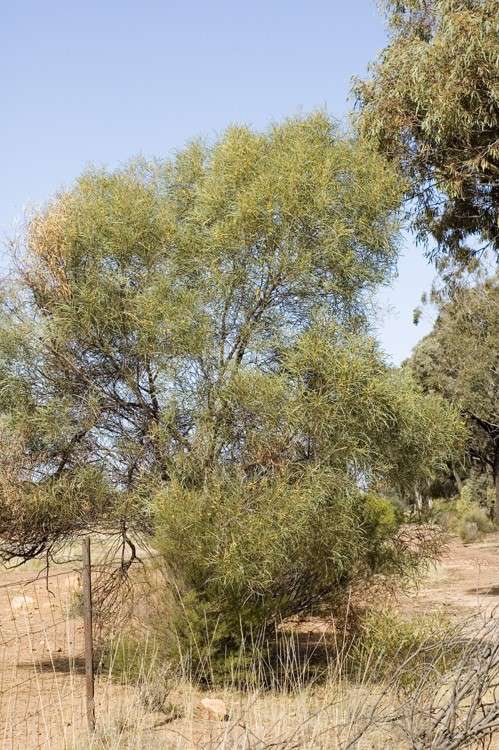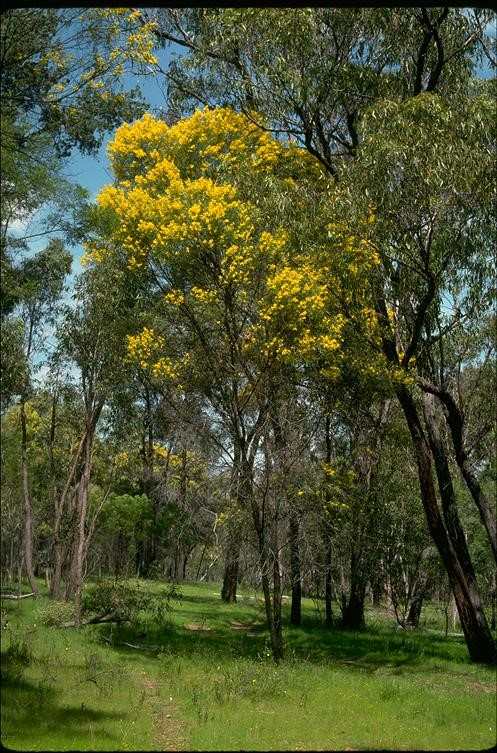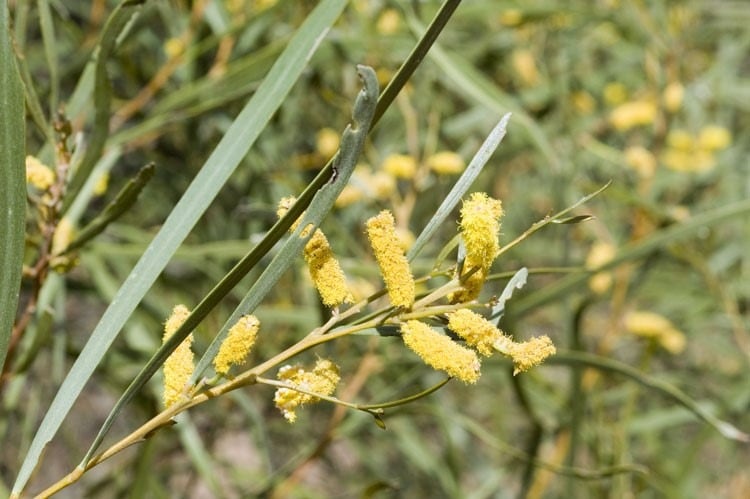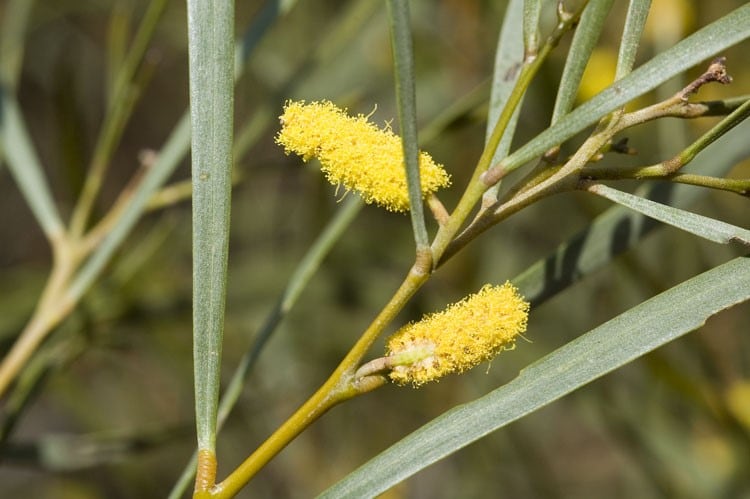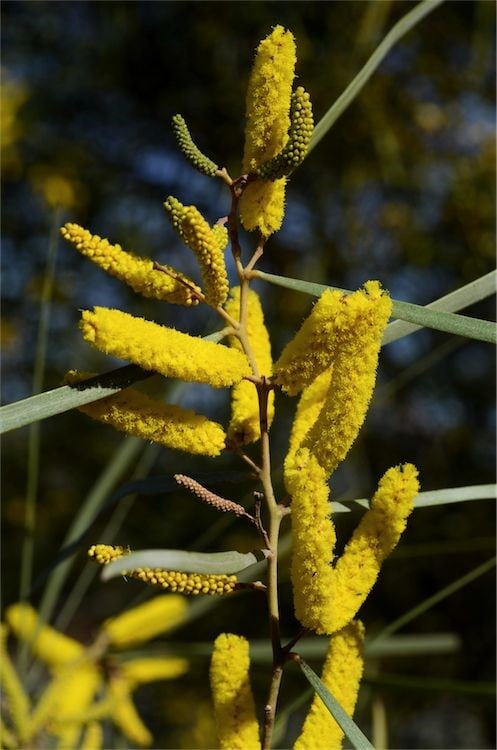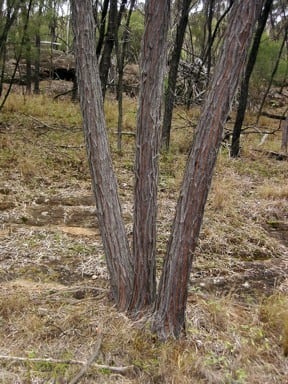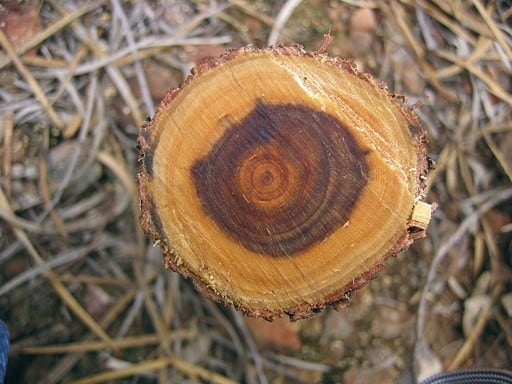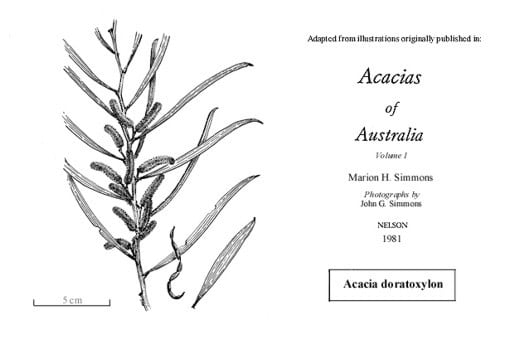Acacia doratoxylon A.Cunn.
WATTLE
Acacias of Australia
Common Name
Currawang, Spearwood, Lancewood and many more, fide G.M.Cunningham, Pl. W New South Wales 349 (1981)
Family
Fabaceae
Distribution
Widespread and common on the western slopes and plains of N.S.W., S of 30ºS and E of 144º19'E, extending to southern tablelands of N.S.W. and A.C.T. and Ovens Ra., Vic.
Description
Shrub or tree to 10 m high, single-stemmed. Bark corrugated, dark greyish brown to black on trunk. Branchlets angular towards apices, yellow-brown to red-brown, glabrous, ±resinous. Phyllodes linear, flat, mostly straight to slightly curved, 7–20 cm long, 2–8 (–10) mm wide, with recurved or oblique apices, coriaceous, glabrous, with 1 prominent and usually 2 subprominent main nerves continuous to base; minor nerves 7–10 per mm, parallel, rarely anastomosing; glands mostly 1, rudimentary, basal. Inflorescences short racemes 2–15 mm long; spikes (1.5–) 2–3.5 cm long, golden. Flowers mostly 5-merous; calyx 0.7–1.1 mm long, dissected to 1/6–1/4, densely pubescent; corolla 1.2–2.1 mm long, dissected to 1/4–1/2, glabrous; ovary ±pubescent or glabrous. Pods linear, slightly moniliform, 5–10 cm long, ±coriaceous, longitudinally wrinkled, glabrous. Seeds longitudinal, elliptic-oblong, 3–5 mm long, black; pleurogram without halo; areole open.
Phenology
Flowers: late Aug.–late Sept. in the north and mid-Sept.–Nov. in the south.
Habitat
Grows in open woodland or open forest in skeletal rocky soils, often on ridges or hillsides and on flat or undulating land, with mallee eucalypts in red earths.
Specimens
N.S.W.: ‘Curraweena’, N of Cobar, E.D’Arnay 680 & K.Wells (CANB, NSW); Snowy R., 47 km SSW of Jindabyne, R.G.Coveny 5426 (A, AD, BRI, CANB, K, L, LE, MEL, NSW, UC, US); 24.9 km NNE of Tullibigeal, R.G.Coveny 12067 & P.D.Hind (AD, B, BRI, K, MO, NSW, TL, US); 25.4 km NW of Girilambone on road to Bourke, R.G.Coveny 12275 & J.Dalby (B, BRI, MEL, MO, NSW, TL, Z). A.C.T.: Molonglo Gorge, P.J.Darbyshire 495 (CANB n.v., NSW). Vic.: 15.5 miles [24.8 km] from Springhurst along Cemetery Rd toward Eldorado, E.M.Canning 251 (CANB, NSW).
Notes
Closely related to A. caroleae but distinguished by its densely pubescent calyx and commonly broader phyllodes with apices normally gently recurved or oblique.
Information on the biological and ecological features, and the utilisation potential, of this species is given in B.R.Maslin and M.W.McDonald, AcaciaSearch: Evaluation of Acacia as a woody crop option for southern Australia, RIRDC Publication No. 03/017, 80–83 (2004).
FOA Reference
Data derived from Flora of Australia Volumes 11A (2001), 11B (2001) and 12 (1998), products of ABRS, ©Commonwealth of Australia
Author
Minor edits by B.R.Maslin
Dr M.D.Tindale and Dr P.G.Kodela with the assistance of M.Bedward, S.J.Davies, C.Herscovitch, D.A.Keith and/or D.A.Morrison
This identification key and fact sheets are available as a mobile application:
URL: https://apps.lucidcentral.org/wattle/
© Copyright 2018. All rights reserved.
